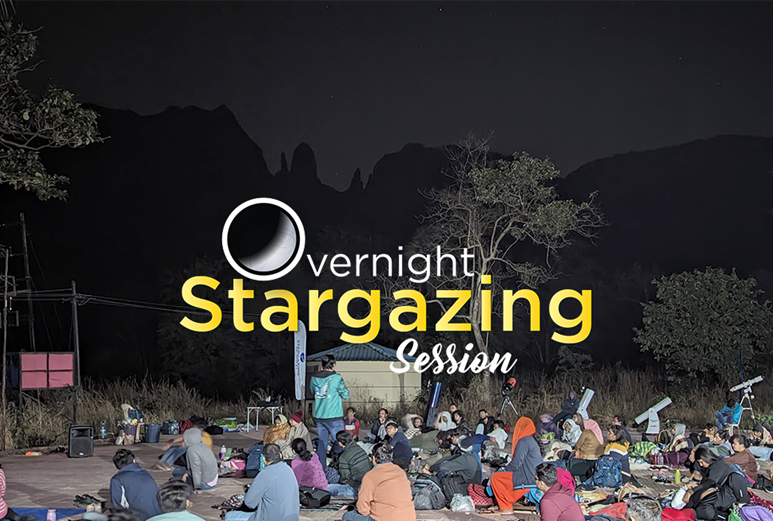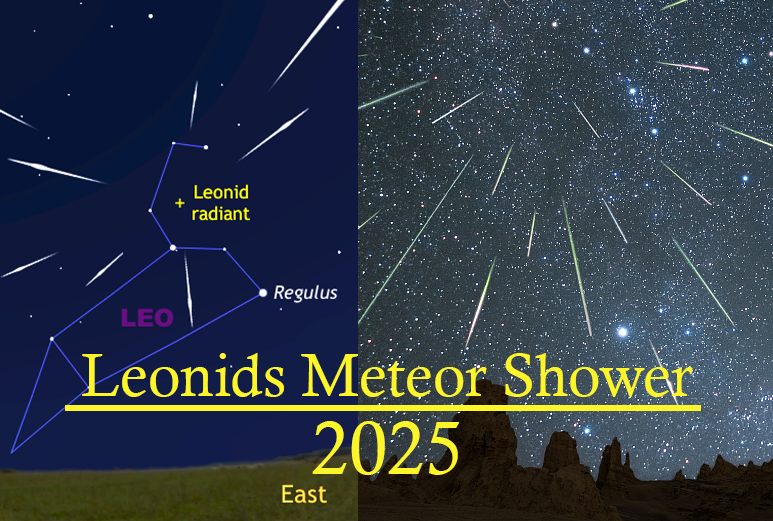

Basic Astronomy Course ( For 16+ Year)
Have you ever looked up and wondered what lies beyond our sky? The Voyager Level Basic Astronomy Course is your gateway to the cosmos — combining science, observation, and imagination. Designed for curious minds aged 16 and above, this course offers a comprehensive introduction to astronomy through interactive lectures, real sky observation, and engaging activities.
 Starts from 2nd Aug 2025
Starts from 2nd Aug 2025

₹ 499/ Person
![]() Sat: 7:30 PM- 8:30 PM
Sat: 7:30 PM- 8:30 PM
Sun: 10:30 AM- 11:30 AM
![]() 3 Months
3 Months

Last Date of Registration: 1st Aug 2025
➔ Learn how the universe evolved — from stars to galaxies
➔ Understand celestial motion, eclipses, and planetary science
➔ Explore cutting-edge space missions and cosmic mysteries
➔ Blend traditional Indian sky knowledge with modern science
1. Introduction to Astronomy
– What is astronomy? Scope and branches (observational, theoretical, planetary, cosmology, etc.)
– History of astronomy: from ancient sky-watchers to space telescopes
– Difference between astronomy and astrology
– Major Indian and global contributions to astronomy
2. Observational Techniques & Tools
– Naked-eye astronomy: Constellations, moon phases, planetary visibility
– Telescopes: Types (refractor, reflector), magnification, mounts
– Binoculars and astrophotography basics
– Light pollution, sky brightness, and observing conditions
3. Celestial Coordinate Systems and Celestial Circles
– The celestial sphere: Zenith, horizon, meridian
– Equatorial and horizontal coordinate systems: RA, Dec, Alt, Az
– Ecliptic, celestial equator, solstices, and equinoxes
– Observing the night sky from different latitudes
4. The Solar System
– Sun-centered view of the solar system
– Planets: Classification, orbits, features, moons
– Comparative planetology: Atmospheres, geology, magnetospheres
5. Minor Bodies in the Solar System
– Asteroids, comets, meteors, Kuiper Belt, Oort Cloud
– Famous missions (e.g., Rosetta, OSIRIS-REx)
– Meteor showers and how to observe them
6. The Sun – Our Nearest Star
– Structure of the Sun: Core, photosphere, corona
– Solar phenomena: Sunspots, flares, solar wind
– Sun-Earth connection: Seasons, auroras, space weather
7. Stars and Their Life Cycle
– Types of stars: Spectral classification, brightness, temperature
– HR diagram – understanding stellar evolution
– Birth, main sequence, red giants, white dwarfs, supernovae, neutron stars, black holes
8. The Milky Way – Our Home Galaxy
– Structure: Disk, bulge, halo, spiral arms
– Our position in the galaxy
– Motion of the Sun and stars within the galaxy
9. Extragalactic Astronomy – Galaxies and Beyond
– Types of galaxies: Spiral, elliptical, irregular
– Active galaxies and quasars
– Galaxy clusters and superclusters
– Redshift and expanding universe
10. Astronomy in the Indian Almanac
– Timekeeping and calendar systems
– Nakshatras, Tithis, planetary positions
– Cultural significance of eclipses and celestial events
– Comparison of traditional and modern astronomical predictions
11. Universe at Different Wavelengths
– Electromagnetic spectrum overview
– Why multi-wavelength astronomy is crucial
– Examples: Radio (pulsars), IR (dust), X-ray (black holes), Gamma-ray (bursts)
12. Introduction to Cosmology
– Origin of the universe: Big Bang theory
– Structure of the universe at a large scale
– Dark matter and dark energy
– Fate of the universe
13. Search for Extraterrestrial Life
– Habitable zones and extremophiles
– Methods of detection: SETI, biosignatures, technosignatures
– Exoplanet discoveries (Kepler, TESS, JWST)
– The Drake Equation and Fermi Paradox
Online Basic Astronomy Course fees: Rs. 499 / Per Person
Online Basic Astronomy Course + 1 Field Event: Rs 1499/ Per Person (Event at Mahuli Location)
Online Basic Astronomy Course + 2 Field Events: Rs 2499/ Per Person (Event at Mahuli Location)
No Refund
➔ Grasp the foundations of modern astronomy and cosmic evolution
➔ Understand how astronomers collect data from various wavelengths
➔ Appreciate the harmony between cultural and scientific astronomy
➔ Be equipped to pursue deeper studies or stargazing as a serious hobby
Upcoming Events

Overnight Stargazing Session
29th Nov. 2025

Starry Night at Bhandardara
26th Oct 2025

Leonids Meteor Shower
17th Nov 2025
